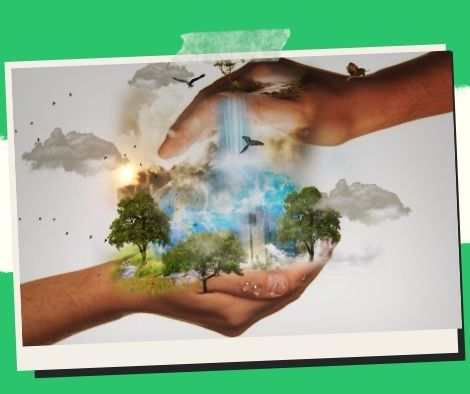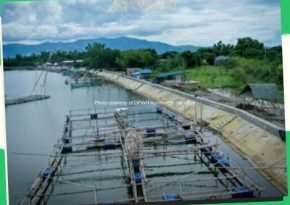
According to a study, half of the world’s glaciers will have melted by 2100.
Half of the world’s glaciers are expected to disappear by the end of the century, leaving behind not just the loss of their stunning natural beauty but also a greater lack of water and an increased danger of natural disasters.
The 21st-century global glacier change report, Global Glacier Change in the 21st Century: Every degree of temperature rise matters, revealing the drastically altered world we may live in by 2100 when even the best-case scenario would cause enormous glacier loss.
The report’s co-authors, David Rounce and Matthias Huss, each gave a separate interview to Anadolu about its findings, which included assessments of about 200,000 glaciers around the world under various temperature scenarios. They emphasized the significance of lowering carbon dioxide emissions for preserving glaciers.
“Action is helpful, but some loss is unavoidable.”
Even the best-case scenario, according to Rounce, an assistant professor of civil and environmental engineering at Carnegie Mellon University in the US, would not prevent global temperatures from rising by more than 1.5 degrees Celsius.
Even with that objective, he said that by 2100, Central Europe will have lost “85% of glaciers by mass and 83% of glaciers by number,” meaning that even under the best-case scenario, there will be significant glacier loss.
All glaciers, excluding ice sheets, are “losing around 26% of their mass, adding roughly 90 millimeters (3.54 inches) to sea level rise from just the glaciers, and losing almost 50% of the glaciers by number,” according to the expert’s global best-case scenario.
According to the 2.7C scenario, approximately a third of glacier mass, two-thirds of glaciers, and around 150 millimeters (5.9 inches) of sea level rise are due to glaciers.
When asked if the situation might be changed, Rounce responded that many of the effects of climate change are already causing glaciers to recede.
While taking action will undoubtedly help protect some of the ice in the area, some ice loss is unavoidable since those glaciers are responding.
To rescue roughly 75 percent of all glaciers, Huss, a glaciologist and the director of Glacier Monitoring (GLAMOS) in Switzerland, highlighted the need for “strong climate change mitigation initiatives.”
“This is primarily due to the fact that the large glaciers in the polar areas can still be saved. While for the smaller glaciers, such as those in the Alps and Turkey, it is already too late, according to Huss.
The world is currently experiencing “a very big rise” in global temperatures, which has resulted in “a loss of glaciers,” he added, adding that it is not too late to take action but that the situation is not reversible, at least in the short- or mid-term.
We can still lessen “the most terrible repercussions, the most adverse impacts of global sea level change and climate change internationally,” though, therefore it is still “essential to act now,” in the scientist’s words.
If nothing is done to combat climate change, all of Europe’s glaciers would be gone, save for a few ice patches at the highest elevations, predicted Huss. If nothing is done, all glaciers in Europe will be gone, save for a few ice patches.
In contrast, the current estimate is closer to 2.7C, and in that event, estimations predict that Europe will lose about 94% of its glacier’s mass by 2100. Rounce said that in a 4C temperature change scenario, Europe will lose 99% of the mass of its glaciers.
Therefore, he continued, “Europe is one of those regions that is particularly susceptible to variations between a degree and a half, two degrees, and three degrees.
“That’s actually one of the areas in our analysis where we say every increase in temperature counts because our society’s choices can have a tremendous impact on keeping at least some of the ice in Europe.”
Impacts of glacier thinning
Rounce noted the role that glaciers play in the sea level rise since their melting would increase the global mean sea level, or the baseline, making severe events more dramatic.
“It’s the extreme storm systems that pass through and bring about this destruction and this tremendous flooding, along with the annoyance flooding that occurs on the coasts. If we don’t implement large-scale adaptation techniques, the baseline sea level rise, for instance, would increase by 100 millimeters (3.9 inches), which will make those catastrophic occurrences more worse, he warned.
Huss expressed concern about the sea level rise, stating that it may reach three meters (9.8 feet) by the year 2300, which would provide a “major challenge” for many coastal cities.
Regarding the significance of glaciers as a source of water, he stated that during hot, dry seasons of the year, glaciers provide a significant amount of water to streams.
“As long as glaciers are present, summer drought is significantly reduced. In the future, if glaciers have vanished, we won’t have enough water during the hot, dry summers, he said. And this can be an issue for the consistency of stream flow for irrigation as well as for the generation of electricity.
Huss also discussed the potential impacts on glacier tourism in the Alps, noting that visitors from all over the world swarm to the region to ski and view its stunning glaciers.
The country’s water resources as well as tourism would be affected if Switzerland lost its glaciers, he noted.
Need for global action
In order to attempt and mitigate and avert some of the damages that we will witness, Rounce said it is “essential” that all nations take steps to meet their pledges to cut carbon emissions under the Paris Agreement.
The capacity to conserve a lot of ice, he continued, “is incredibly crucial because it’s very easy to get caught up in the reality that a lot of the glacial mass loss is inevitable and that a lot of the glaciers are being lost.”
Huss emphasized the necessity for changes in many areas, including the economy and society, in order to minimize emissions throughout the entire planet.
The most crucial thing, according to him, is that we act as a global community rather than just at the national level.
Save/Share this story with QR CODE
Disclaimer
This article is for informational purposes only and does not constitute endorsement of any specific technologies or methodologies and financial advice or endorsement of any specific products or services.
📩 Need to get in touch?
Feel free to Email Us for comments, suggestions, reviews, or anything else.
We appreciate your reading. 😊Simple Ways To Say Thanks & Support Us:
1.) ❤️GIVE A TIP. Send a small donation thru Paypal😊❤️
Your DONATION will be used to fund and maintain NEXTGENDAY.com
Subscribers in the Philippines can make donations to mobile number 0917 906 3081, thru GCash.
3.) 🛒 BUY or SIGN UP to our AFFILIATE PARTNERS.
4.) 👍 Give this news article a THUMBS UP, and Leave a Comment (at Least Five Words).
AFFILIATE PARTNERS

World Class Nutritional Supplements - Buy Highest Quality Products, Purest Most Healthy Ingredients, Direct to your Door! Up to 90% OFF.
Join LiveGood Today - A company created to satisfy the world's most demanding leaders and entrepreneurs, with the best compensation plan today.



 Business Technology, Finance Technology & Information Technology
Business Technology, Finance Technology & Information Technology





